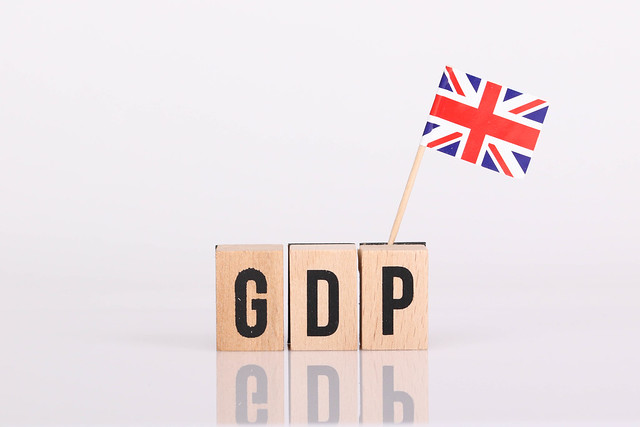
The IMF has announced that the global economy is facing a potential downturn, with rising prices around the globe as a result of the war in Ukraine. The organisation stated that “for many people, 2023 will feel like a recession”, and emphasised the need for international cooperation between governments and central banks to alleviate populations bearing the brunt of the coming economic downturn.
Based on recent forecasts, the United Kingdom is at a high risk of experiencing a sustained recession for the next three quarters. However, all analysts are in agreement that the Government’s recent intervention on energy bills has significantly decreased the likelihood of a severe downturn. High energy prices, rising inflation, and increasing interest rates caused by global economic weakness are the main reasons behind this predicted period of recession.
Some forecasts, such as Goldman Sachs’ revised analysis, outline that the United Kingdom is still likely to enter a deeper than expected recession in 2023. In an analysis released mid-October, the investment bank downgraded its outlook for Britain, forecasting the UK economy would shrink by 1% next year, lower than their previous estimate of 0.4%.

A Rundown of the UK Economy in 2022
Since September’s ‘mini budget’ fiasco, the financial markets have been more settled due to the withdrawal of a handful of large proposed tax cuts. The main issue with the mini-budget was that fiscal and monetary policy were going against each other – for example, while taxes are often cut to encourage demand, resultant interest rate hikes would work to weaken demand while managing inflation.
The recent appointment of Rishi Sunak as Prime Minister, and the Government and the Bank of England now seeming better aligned, should help bring much-needed stability to both the political sphere and financial markets.

Image Credit: Wooden GDP Blocks, Marco Verch, licensed under CC BY-ND 2.0
GDP
Kwasi Kwarteng’s tax cuts, announced in the mini-budget, are anticipated to invigorate growth in the short term; however, the IMF has cautioned that these same cuts will make inflationary price hikes more difficult to manage in the future.
According to the IMF, UK GDP growth will slow from 7.4% in 2021 to 3.6% in 2022, and only 0.3% by 2023. The mini-budget’s recent release was not factored into these predictions, but if it had been, the revised growth rate estimation would have also resulted in higher inflationary forecasts.
The Bank of England stated that the UK is heading for its longest recession since records began, with their projections anticipating this economic downtown to continue into 2024. They also went on to say that the UK’s GDP is estimated to drop by 0.75% across the second half of 2022, as people’s real incomes are stretched thin from having to pay more for energy and tradable goods.
In the three months to August 2022, the UK’s GDP fell by 0.3%. This was primarily due to higher prices, which have put a strain on businesses’ operational costs and made it harder for consumers to afford goods. As a result, it’s expected that household consumption will continue to fall. Since this factor makes up 59% of GDP, lower growth is forecasted overall.

Unemployment Rate
In the three months leading up to August, employment figures increased yet again, this time rising to 75.5%. Unemployment also fell during this period and is now at 3.5%, its lowest level since 1974. This marks the third consecutive quarter where job vacancies have decreased (down by 46,000 from June-September), but even with this decrease, the number of job vacancies is still higher than ever before.
However, current forecasts for the near future are bleak. According to Bank of England boss Andrew Bailey, unemployment rates are likely to increase to 6.5% during the upcoming two-year slump that is estimated to last until 2024. One of the main contributors to this potentially unmanageable issue is the country’s lack of available workers, an ongoing problem since the COVID-19 pandemic that has seen the labour force shrink significantly since 2019.
Despite there being a high chance of recession, EY offers a counter narrative; predicting that the unemployment rate will only peak at 5%. This would be much lower than in past economic crashes.

Labour Market
Though the unemployment rate in the UK was at a record low of 3.5% in August 2022, this is not a sign of a highly productive economy, but rather because many people have stopped working altogether since the pandemic began. 21.7% of UK adults are now economically inactive, and as a result, approximately 300,000 fewer people are employed than before the pandemic started.
The record low unemployment rate of 3.5% seen in August 2022 doesn’t necessarily serve as a sign of a highly productive economy. It’s vital to explore the full labour market in order to get a wholistic perspective of the situation. 21.7% of UK currently economically inactive, and as a result, approximately 300,000 fewer people are currently employed than before the pandemic started. These economically inactive individuals are defined as people who are currently not employed and have not been looking for work in the last four weeks or are unable to start work in the next two weeks.
Another factor impacting the labour market is the reality of businesses struggling to keep up with high inflation, something which has resulted in many resorting to cost-cutting methods like reducing their workforce. These cost-cutting measures are likely to influence a future decline in job growth and an increase in unemployment, whilst also compounding the negative near-term outlook for the UK labour market
In addition to a lack of job opportunities, the UK’s tight labour market has caused real wages to stagnate. Even though wages in the UK have been growing at some of the highest rates in recent history, when adjusted for inflation, they have actually fallen by 2.9%. This is one of the largest such drops on record.

Inflation
UK inflation is currently higher than it has been in 40 years, however, interest rates are not expected to rise as highly as initially predicted. Ernst & Young UK thought that inflation would peak at around 11% YOY in October (10.096% was the actual figure) due to the government intervening on energy bills and preventing inflation rates of potentially 15%. Even so, average annual inflation is still estimated to be greater than wage increases until 2024, meaning that household real incomes will most likely decrease over the next 12 months; more than they have since the 1970s.
Inflation is projected to average out at 8.9% in 2022, 5.5% in 2023, and 1.8% bt 2024 – falling below the Bank of England’s target of 2%. Even though high inflation usually results in frequent upticks of the Bank of England’s base rate, EY forecasts a peak at 4% next spring, instead of the current market expectation of 5.5%. Furthermore, they predict rate cuts by late 2023 that are set to be continuing into 2024.
In the past 18 months, inflation in the UK has been steadily increasing. This initially reflected a sharp increase in consumer demand after the COVID pandemic, coupled with global supply chain issues. More recently, it has been influenced by rising energy prices resulting from Russia’s invasion of Ukraine.
The GBP has weakened recently, making imports more expensive and compounding upwards inflationary pressure. Core inflation – when fuel and food prices are not included – rose from 6.3% in August to 6.5% in September, which suggests that there is still a lot of pressure for prices to increase. The Bank of England has raised interest rates 215 points within the past year to try to keep inflation under control.

Business Investment
EY predicts that it will take until late 2025 for business investment to return to a pre-pandemic level. They anticipate that investment will grow by 5.9% over the course of 2022, however, this past summer it was still 8% lower than where it was prior to COVID-19. Only 0.2% growth is expected next year, followed by 1.3% in 2024.
UK Chairman of EY Hywel Ball adds: “Weak UK and global economic growth, the rising cost of capital goods, and a world of higher-than-expected interest rates risk holding back the pace at which business investment will grow.” He also followed up by stating that “There is still scope for business investment to catch up. But businesses will also be thinking about rising interest rates and ongoing domestic and international uncertainty, which will make investment decisions much more difficult.”
According to a recent survey by Deloitte, UK companies are expecting that the recent rise in interest rates will make it difficult to cope with any slump in sales or a recession over the next year. The finance directors at some of Britain’s largest firms said that borrowing was more costly than at any time since 2010, and this made investments harder to justify. The poll also found that a majority of finance directors expected revenues would fall within the next 12 months, and their top two priorities had become cutting costs and controlling cash outflow.

Consumer Spending
UK consumers are facing higher prices and interest rates, which has caused a decrease in confidence levels. This is shown by the shrinking overall consumption in the UK.
Retail sales fell 1.6% in August 2022 with the biggest drop being seen in department stores at 7.7%. Fuel sales have also decreased, down 1.7% in August and 9% lower than before the pandemic started. Driver surveys confirm the tightening of purse strings, showing that people are making less non-essential trips. Online retail has also slowed, with sales decreasing by 3.6% in August.
Due to low earnings, some consumers have started borrowing to make up the shortfall. In July, credit card borrowing grew at its fastest annual rate since 2005. However, businesses are still struggling because people are buying fewer items and companies’ operational costs have gone up. As a result, more direct to consumer businesses are going bankrupt.

The Experts’ Outlook for the UK Economy
According to the Bank of England, growth is projected to continue its fall throughout 2023 and into the first half of 2024 also; as “high energy prices and tighter financial conditions weigh on spending.”
Goldman Sachs continued the gloomy outlook, with its revised analysis released mid-October, now predicting that the UK will enter a deeper recession next year than originally forecasted. The investment bank predicts the UK economy will shrink by 1% next year, down from its previous estimate for a 0.4% contraction.
The recent rises in the Bank of England base rate have led to increased borrowing costs, which are in turn causing businesses to adjust how they finance investment, commented Ian Stewart, chief economist at Deloitte.
He went on to state that “a 12-year period of easy credit conditions is drawing to an end. Corporates are seeing a reset in the cost and availability of credit.” Stewart also said that “not since the credit crunch have chief financial officers rated debt – whether that’s bank borrowing or corporate bonds – as being less attractive as a source of finance for their businesses than they do today.”
Ernst & Young are a bit more optimistic, forecasting a recession for the UK economy only until mid-2023 – even with rising costs, increasing interest rates, high inflation and global economic instability.
CBRE, too, is somewhat optimistic for the UK’s outlook, noting that despite the negative growth universally forecasted, the UK economy is sufficiently healthy to avoid long-term economic scarring. The way that the UK economy recovered from the COVID-19 pandemic, largely thanks to support of jobs and incomes, also serves to build confidence for future economic endurance.

Did you find this article helpful? Do you have any tips that you would like to add? If so, reach out to us through our social channels on Facebook and Twitter.
Also, if you’re looking for flexible workspace across the UK outside of the business parks listed above, you can view our competitive solutions in Central London, Greater London, the North, and the South. You can also call one of our commercial property experts on 020 3970 9731.
Looking for more articles?
You can visit the links below to find more workplace insights.
Office Safety Tips | 11 Ways to Improve Your Workplace
15 Best Business Parks in the UK
Hybrid & Flight to Quality – Changing the UK Office Landscape
UK Regional Office Market Report 2022
28 Clever Ways to Organise Your Desk for Maximum Efficiency
Rising Demand in the UK Flexible Office Space Market
How Long is Maternity Leave in the UK? A Full Guide
10 Common Employee Misconceptions in the Workplace and How to Avoid Them
5 Things That UK Employees Want in an Office Environment
Average Office Worker Salary UK: How Does Your Job Stack Up?
Top Ten Industries in the UK
The Step-by-Step Ultimate Office Move Checklist for 2022

